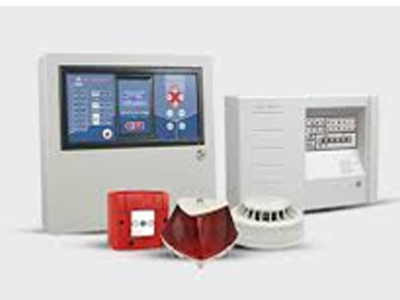Advancing Fire Safety: The Importance of Fire Monitoring Systems

Fires represent a formidable threat to both life and
property, demanding swift detection and response to mitigate their impact. In
this discourse, we delve into the pivotal role of fire monitoring systems in
bolstering overall fire safety and safeguarding against potential devastation.
Understanding Fire Monitoring Systems
Fire monitoring systems, also referred to as fire alarm
systems, are meticulously engineered to detect signs of fire or smoke, promptly
alerting building occupants and emergency services. These systems comprise an
array of components, including smoke detectors, heat detectors, fire alarms,
and control panels, intricately interconnected to afford comprehensive coverage
of the premises. Upon detection of fire or smoke, the system activates alarms,
initiates evacuation protocols, and promptly notifies emergency responders,
facilitating swift intervention.
Early Detection and Response
At the core of fire monitoring systems lies the imperative
of early detection, enabling safe evacuation for occupants and expedited
response for firefighters. By identifying fires in their nascent stages, before
they escalate, these systems impede the spread of flames and curtail property
damage. Moreover, early detection minimizes the risk of injuries and fatalities
by affording occupants ample time to vacate the premises securely.
Varieties of Fire Monitoring Systems
Diverse types of fire monitoring systems cater to varied
environments and requirements:
1. Conventional
Fire Alarm Systems: These systems partition the protected area into
zones, with detectors and alarms wired to specific zones. Upon activation,
the control panel discerns the corresponding zone, furnishing general
location information.
2. Addressable
Fire Alarm Systems: Addressable systems furnish detailed location data
by assigning unique addresses to each detector, enabling precise
identification of the alarm source and facilitating targeted response
endeavors.
3. Wireless
Fire Alarm Systems: Utilizing radio frequency (RF) communication,
wireless systems transmit signals among detectors, alarms, and control
panels sans extensive wiring. Renowned for their installation flexibility,
they are ideal for retrofitting existing structures.
Integration with Building Systems
Modern fire monitoring systems seamlessly integrate with
other building systems, such as HVAC, access control, and security systems, to
furnish comprehensive protection and automation. This integration enables
synchronized responses to emergencies, like initiating HVAC shutdowns to impede
smoke propagation or unlocking doors to expedite evacuation routes. Leveraging
interconnected systems empowers building owners and facility managers to
elevate overall safety and security measures.
Regulatory Compliance
Fire monitoring systems serve as indispensable components of
building safety, often mandated by building codes, fire regulations, and
insurance stipulations. Compliance with these regulations is imperative to
ensure occupant safety and avert penalties for non-compliance. Regular testing,
inspection, and maintenance of fire monitoring systems are equally essential to
uphold their efficacy and regulatory adherence.
In Conclusion
Fire monitoring systems stand as linchpins in fortifying lives,
property, and assets against the ravages of fires. By furnishing early
detection and swift response capabilities, these systems mitigate fire impact
and facilitate effective mitigation endeavors. Investing in fire monitoring
systems constitutes a proactive stride towards enhancing overall fire safety,
fostering peace of mind for building occupants and stakeholders alike.













